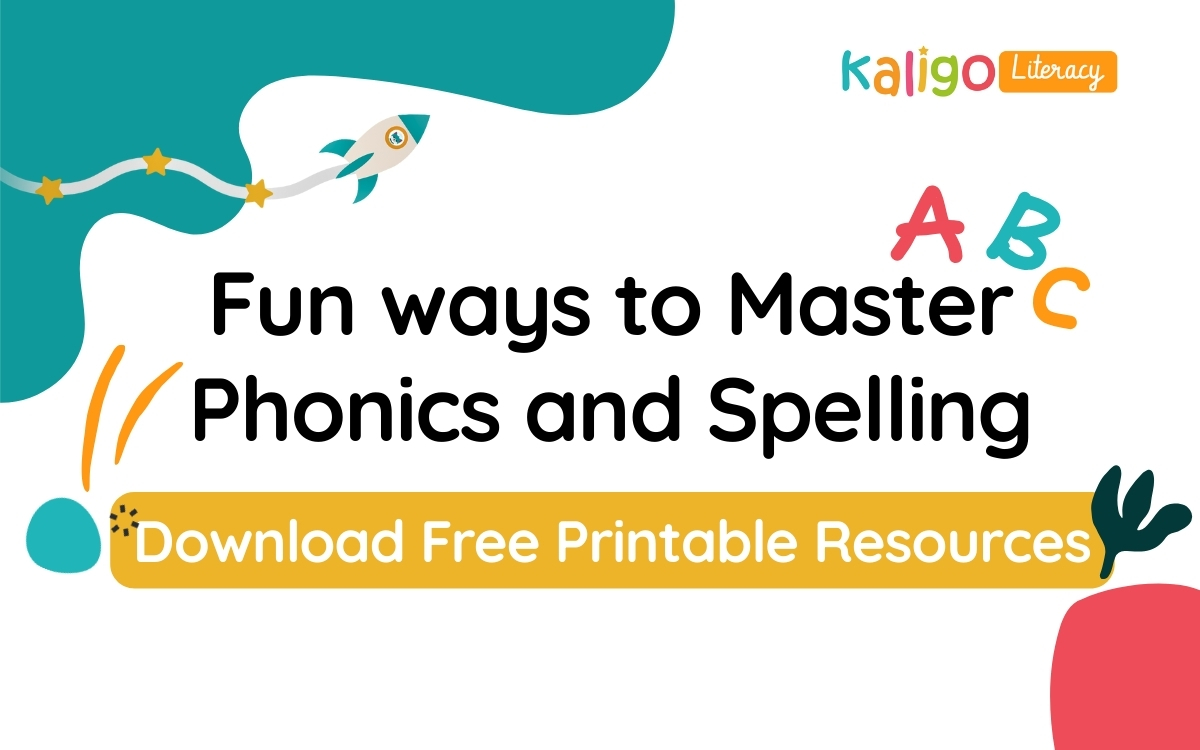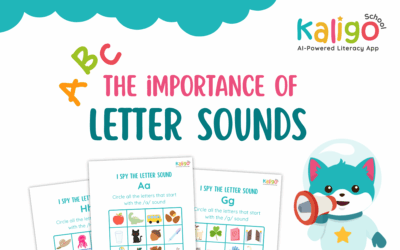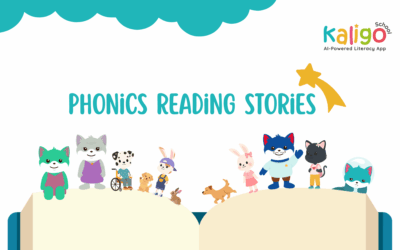Introduction to Year 1 Spelling and Phonics
Spelling for Year 1 is all about extending the children’s skills in their reading and writing journey. As the biggest goal of the year, children put into practice the phoneme and grapheme knowledge they have built up over Phases 2, 3 and 4 and extend their knowledge of the alternative spellings for the same sounds using new phonemes and graphemes. It’s important that students not only learn how to spell these words, but also practice phonics to connect sounds to letters, allowing them to decode new words on their own.
By the end of Year 1, children will also be preparing for the Year 1 Phonics Screening Test, which assesses their ability to recognise phonetic patterns in words. Let’s dive into how you can support students in mastering these essential spelling skills!
Welcome to the world of Year 1 spelling
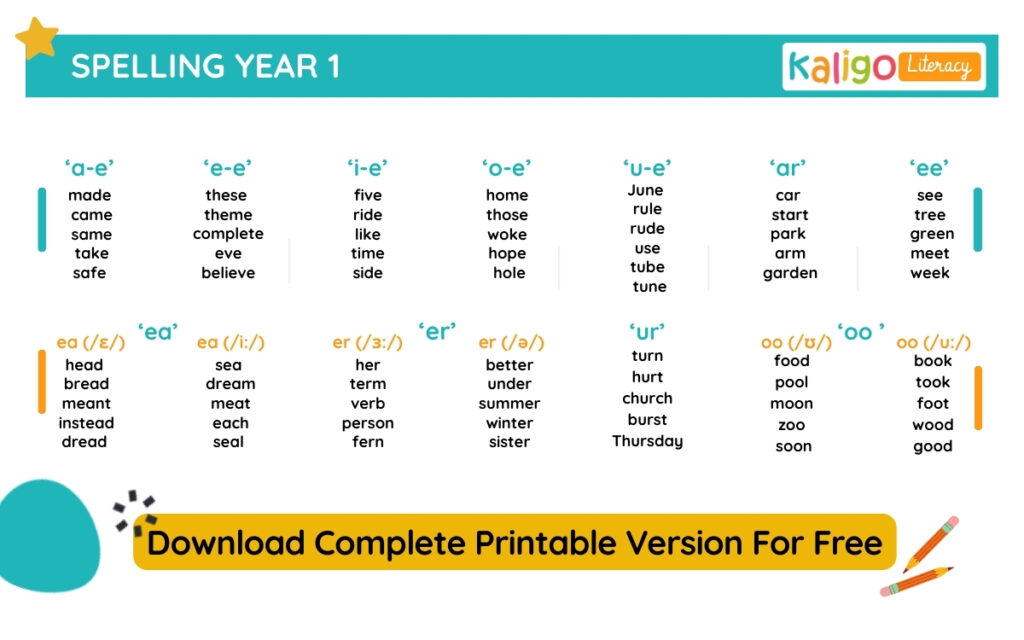
Welcome to the world of Year 1 spelling, where letters become sounds, and sounds become power! Phonics and spelling are BFFs! At this stage, children learn how to break down words into sounds (phonemes) and connect those sounds to letters (graphemes). Understanding the relationship between sounds and letters is essential for spelling words correctly.
By focusing on phonics, children develop the skills they need to both decode (read) and encode (write) words. When a child can sound out /c/ + /a/ + /t/ = cat, they’re not just reading; they’re learning how to spell too. Practicing phonics allows students to read and spell confidently, which is why phonics assessments are an important part of the Year 1 curriculum.
CVC Words: Keep It Interactive

We all know the CVC gang (cat, dog, bat…) are Year 1 staples. The trick? Keeping the practice exciting so it sticks. Here are a few ways to spice it up:
- Sound-Hop Game: Lay down big cards with letters on them on the floor. Call out a CVC word and have students hop on the letters in order (/c/, /a/, /t/). Movement = memory!
- Sing + Write: Sing each phoneme as they write it down; connects sound to muscle memory without boring drills.
- Mini team works: Use mini whiteboards or magnetic letters in pairs. One student says the word, the other builds it. Tag-team spelling is way more fun.
Tricky Words: Make the “Rule-Breakers” Stick
You know the usual suspects; tricky words that don’t follow regular phonetic patterns, such as was, come, and said. These words need to be memorised (ideally learned by constant practicing) because they don’t follow standard rules. Here are some tips for tackling tricky words:
- Year 1 Flashcards: Create flashcards with the word on one side and a picture clue on the other. The printable flash cards will be uploaded soon in the Kaligo resource page ready for free download.
- Tricky Word Bingo: Mix in weekly target words with others they’ve already learned. Its a great exercise for assessment without the stress.
- Use in sentences: Once students are comfortable spelling the tricky word, ask them to use it in a sentence to reinforce its meaning.
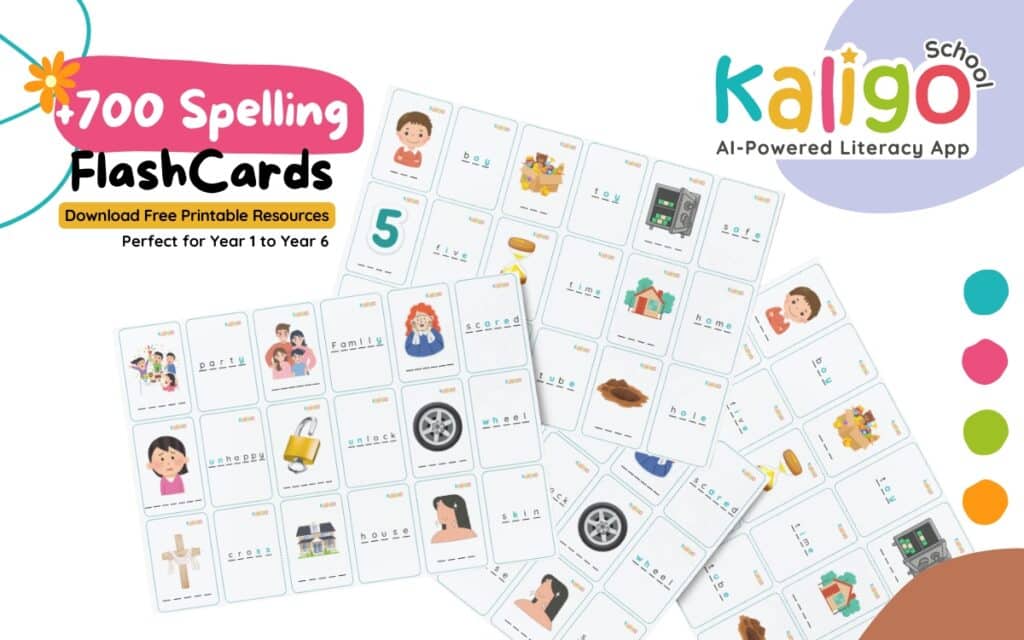
Other Fun Ways to Practice Year 1 Spelling
Spelling practice doesn’t have to be dull! Here are some engaging activities to make Year 1 spelling fun:
- Spelling games: Play games like Spelling bingo, memory matching, or spelling puzzles to practice words.
- Write a story: Ask them to write a short story using their spelling words.
- Word hunts: Go on a word hunt around the house or in books and ask students to spot words from their spelling list.
- Singing the words: Turn spelling practice into a song. This helps children remember tricky words with rhythm and repetition.
- Use Kaligo: The Kaligo app is a literacy solution that makes spelling practice even more engaging by combining interactive exercises with handwriting and phonics. Children use a tablet and a multifunctional touch pen (stylus) to practise at their own pace; with instant, supportive feedback that boosts confidence.
These activities not only make learning fun, but also give children the practice they need to master spelling in Year 1.
How Kaligo Can Help with Spelling?

Kaligo makes spelling practice smarter and more fun by combining interactive handwriting with phonics-based learning; all on a tablet, Using a stylus!
Just like what they do with a pen on a paper, children trace letters and words while the app gives instant feedback, helping them correct mistakes in real-time. It’s like having a digital teaching assistant that personalises each child’s learning path based on their progress.
From CVC words to tricky spelling patterns, Kaligo reinforces everything through engaging activities, so children don’t even realise they’re learning; because basically they are just having fun and more screen time!
It is a more efficient tool for teachers thanks to being able to track progress and tailor lessons without extra workload. Total win-win!
Preparation for the Year 1 Phonics Screening Test
The Year 1 Phonics Screening Test (held each June in England) checks how well students can sound out both real words and nonsense words (pseudo-words). Here are some ways to prepare for the test:
- Daily phonics practice: Consistent practice with phonics exercises can help them to feel more confident and prepared.
- Focus on blending sounds: Practice blending sounds together to make words. Start with simple CVC words and move on to more complex words as students progress.
- Be creative: since the pseudo-words are a part of the assessment; let the students create new words and help them to practise their understanding of phonics.
It’s important to remember that the Phonics Screening Test is not just a one-time assessment. It’s a great way to measure progress and identify areas where a student might need more support.
Free Printable Spelling and Phonics Resources
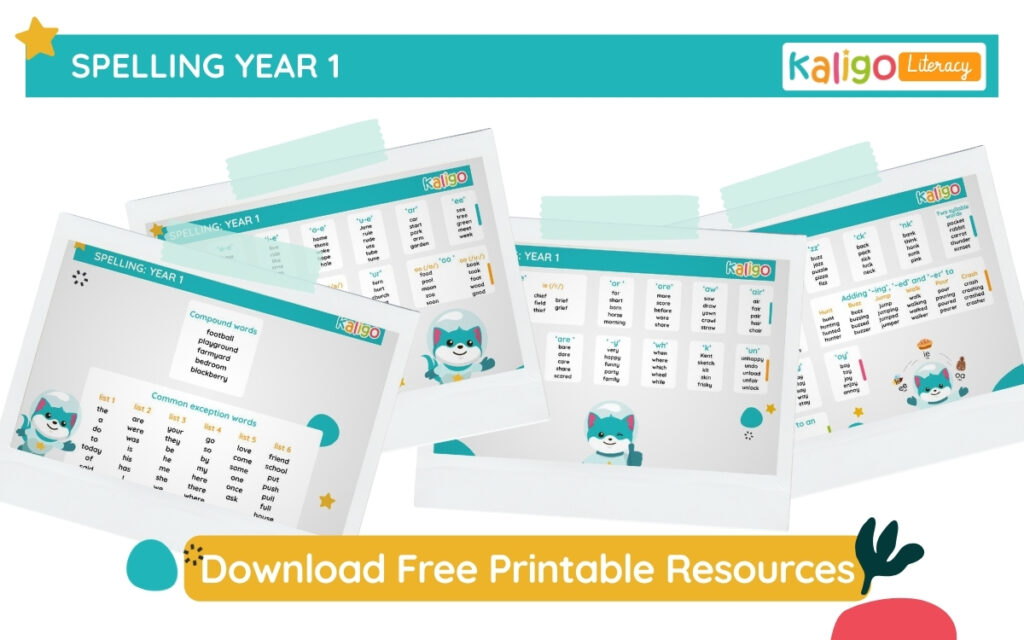
To help children have more fun while learning, and give creative ideas and educatif material to teachers, we’ve created free printable spelling and phonics resources that you can use at home or school. These worksheets will provide additional practice for Year 1 spelling words and phonics exercises, making it easy to track students’ progress and keep them engaged.
Teachers’ Guide
A well-structured file has been organized by Year, seasonal term (Autumn, Spring, and Summer), and then by week. It explains how to get the best out of the Spelling Word List. It’s available for our dear teachers in the Teacher’s Portal. Simply login here to dowload the file.

